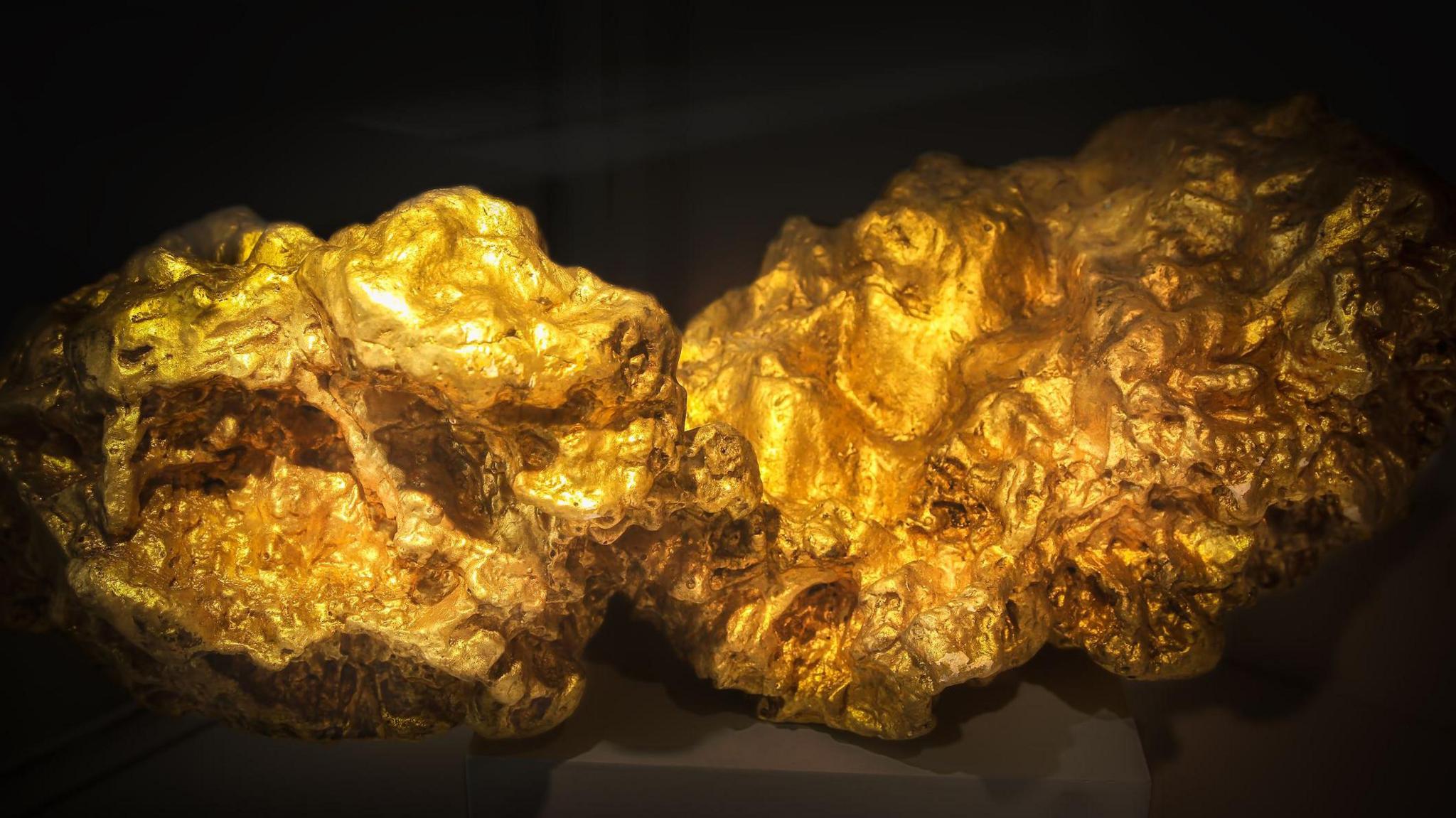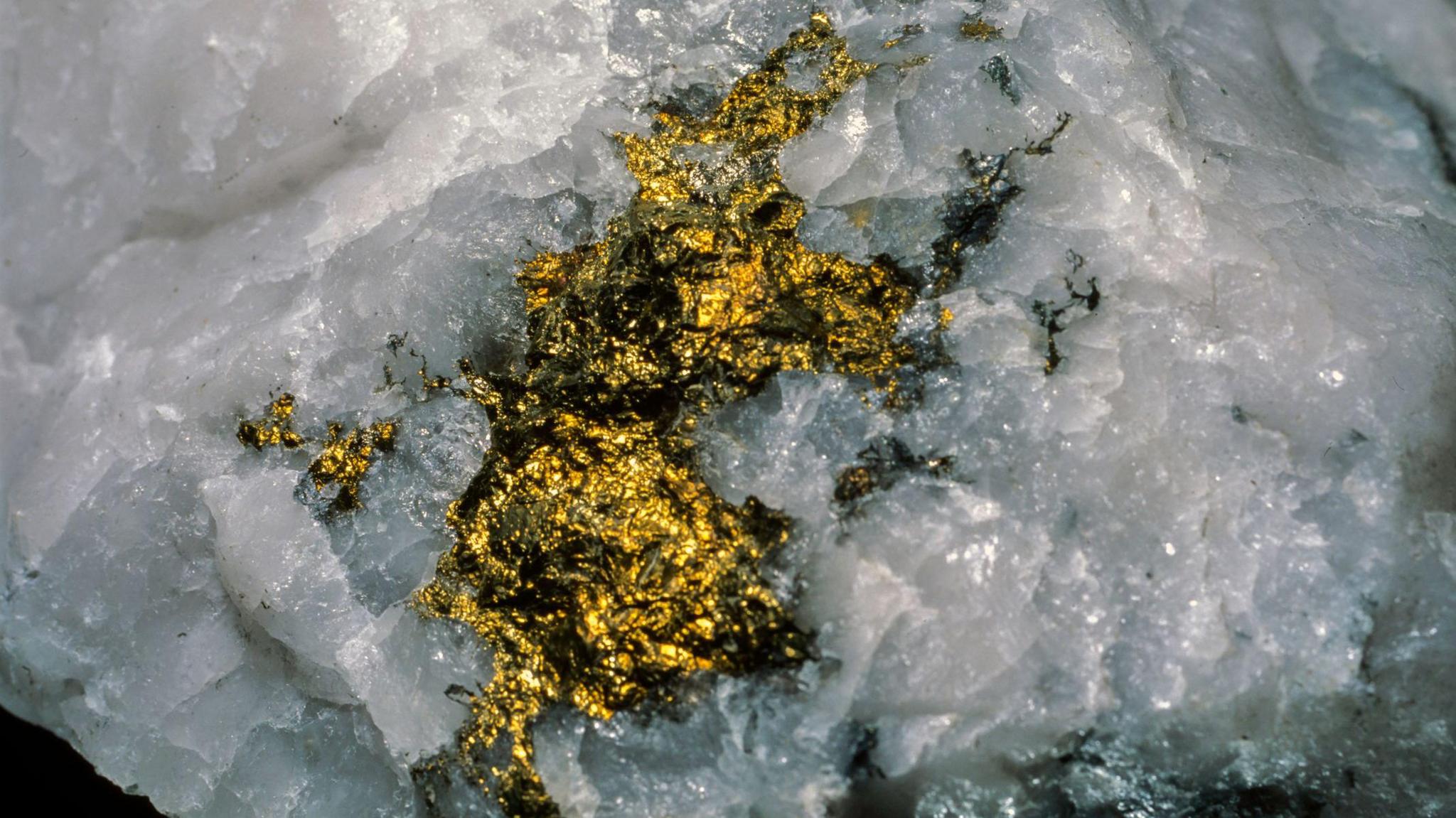How earthquakes produce large pieces of gold

- Published
Scientists think they may have worked out how earthquakes can produce big chunks of gold.
Gold can be formed naturally underground in cracks within rocks containing a mineral called quartz - but experts were unsure exactly why this happened.
Now scientists think it can be explained thanks to electricity made from earthquakes.
More hidden gold here
- Published26 August 2024
- Published21 March 2024
- Published7 August 2024
What did experts discover?

Gold can often be found in a mineral called quartz
Gold is carried in super-hot liquids as it flow through cracks in the Earth's crust.
As it cools, gold becomes trapped in cracks within rock - which are known as quartz veins.
Quartz is a glassy mineral that, if shaken during an earthquake, can generate electricity.
It's that electrical charge that scientists say drags any tiny pieces of gold together.
Over time, the tiny pieces of gold clump to form a big chunky nugget.
Christopher Voisey, a geologist at Monash University in Australia and the lead author of the study says: “If you shake quartz, it makes electricity. If you make electricity, gold comes out."
